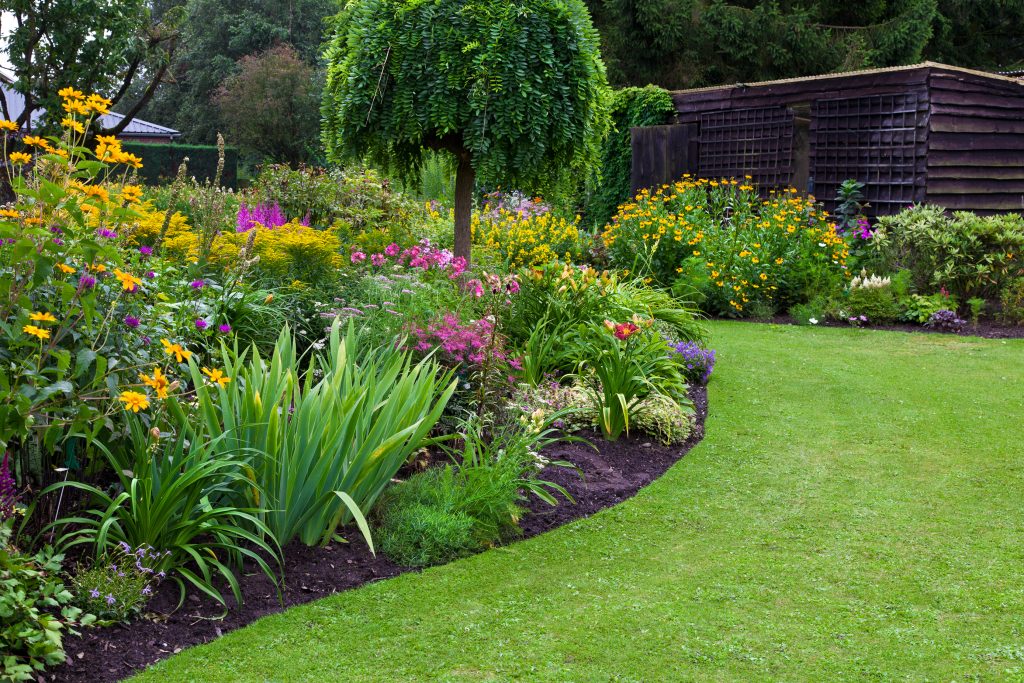- Proper watering, regular pruning, soil testing, and mulching are fundamental to maintaining tree health and aesthetics.
- Overwatering and underwatering can be harmful, so understanding each tree species’ specific water needs is essential.
- Soil testing provides vital information about soil composition, enabling effective improvements to soil conditions.
- Effective pest management, including regular inspections and the use of biological controls, is crucial for preventing damage and ensuring tree health.
Keeping the trees in your garden in tip-top shape is more than just a matter of aesthetics. It’s about fostering a healthy environment where nature can thrive. This guide will explore some of the best practices for maintaining your trees, ranging from regular pruning to effective pest management. Get ready to roll up your sleeves and ensure your garden remains a lush, verdant sanctuary.
Tree Care
This section will delve into the specifics of tree care, offering invaluable tips and guidelines to help nurture your trees and keep them in optimal health. Read on to learn more.
Proper Watering
Proper watering is critical to tree care, and understanding your tree’s specific needs is essential. Different tree species require different amounts of water, and these needs can also vary based on the climate, soil type, and the tree’s age and health. Overwatering can be as harmful as underwatering, as excess moisture can lead to root rot and other diseases.
A general rule is to water deeply but infrequently, ensuring the water reaches the root zone. Young trees usually require more frequent watering until their root systems are established. During dry spells, even mature trees may need supplemental watering. Always water in the early morning or late evening to minimize evaporation, and consider using a soaker hose or drip irrigation system for efficient watering. Remember, a well-watered tree is a healthy, happy tree.
Regular Pruning
Regular pruning is essential to maintaining your trees’ health and visual appeal. Pruning involves selectively removing branches from a tree to improve its structure and promote growth. However, improper pruning can lead to damaged trees, so it’s crucial to understand what to prune, when to prune, and how to do it. If you’re unsure, consider hiring reputable tree surgeons.
They are trained professionals who understand the biological processes of trees and are skilled in the safest and most effective pruning techniques. These experts can help mitigate risks, prevent tree diseases, and improve your trees’ overall health and longevity. So, put the health of your trees in the hands of professionals, such as reputable tree surgeons, for a thriving and visually appealing garden.
Soil Testing
Soil testing is a fundamental step in establishing the health and sustainability of your trees. It provides insights into the composition of your soil, including its pH level and the presence of essential nutrients. This information is vital as different tree species thrive in different soil conditions. Regular soil testing allows you to improve the soil conditions effectively by adjusting the pH or supplementing key nutrients.
For accurate results, consider using a professional soil testing service, which can provide a detailed analysis and recommendations for soil amendments. Alternatively, home soil testing kits are available for a more hands-on approach. Remember, creating the ideal soil environment will enable your trees to grow strong and healthy, enhancing the beauty and biodiversity of your garden.
Mulching

Mulching is an essential practice in tree care, providing numerous benefits. It helps to retain soil moisture, regulate soil temperature, and suppress weed growth that could compete with your trees for nutrients. High-quality organic mulch, such as compost, wood chips, or shredded leaves, can also enrich the soil as it decomposes, adding valuable nutrients and improving soil structure.
When mulching, apply a 2 to 4-inch layer around the tree’s base but avoid piling it against the trunk, which can create a moist environment conducive to pests and diseases. The mulched area should ideally extend to the drip line of the tree (the outermost circumference of the tree’s canopy), providing maximum benefits to the root system. Remember, proper mulching is key to sustaining healthy trees and enhancing the overall vitality of your garden.
Safe Removal of Dead Trees
The safe removal of dead trees is a vital aspect of tree care that protects your garden’s ecosystem and prevents potential hazards. Dead trees can become home to harmful insects and pests, causing an imbalance in the garden’s natural equilibrium. Furthermore, over time, these trees can become unstable and pose a risk of falling, potentially causing injury or damage to property.
Therefore, it’s important to identify dead trees promptly and remove them safely. This task can be hazardous, especially for larger trees, so hiring a professional tree removal service is generally recommended. These experts have the necessary knowledge and equipment to handle the task safely and efficiently. In the end, removing dead trees, while appearing drastic, is a necessary measure for maintaining your garden’s overall health and safety.
Effective Pest Management

Effective pest management is crucial in maintaining the health and longevity of your trees. Pests can cause significant damage, from defoliation to stunted growth, and even tree death. Integrated Pest Management (IPM) is a holistic approach combining various strategies to control pest populations.
This includes regular tree inspections to identify any signs of pest activity early, employing biological controls like beneficial insects, and using targeted, low-toxicity pesticides only as a last resort. Maintaining a diverse garden is important, as various plant species can deter pests and attract beneficial organisms.
If you’re uncertain about a pest issue, consult a professional arborist or a local extension service. They can accurately identify the pest and suggest the most effective control measures. Remember, effective pest management is essential for a vibrant, healthy garden.
Remember, your actions today will shape the landscape of tomorrow. So, roll up your sleeves, feel the earth under your fingers, and create a garden that resonates with life, growth, and natural beauty.


